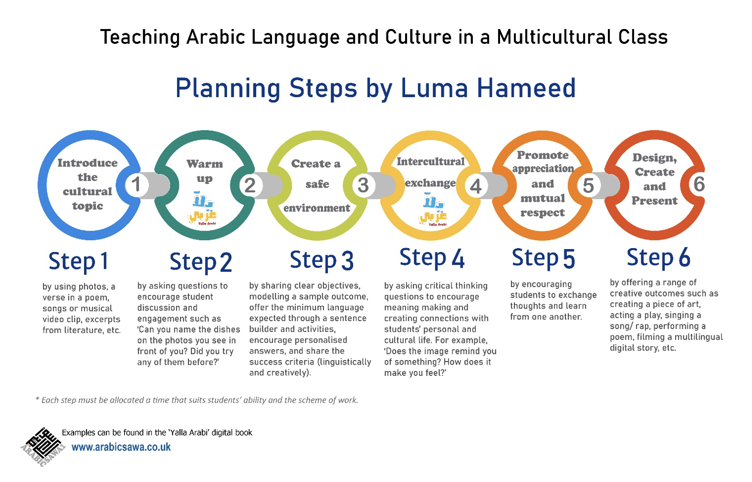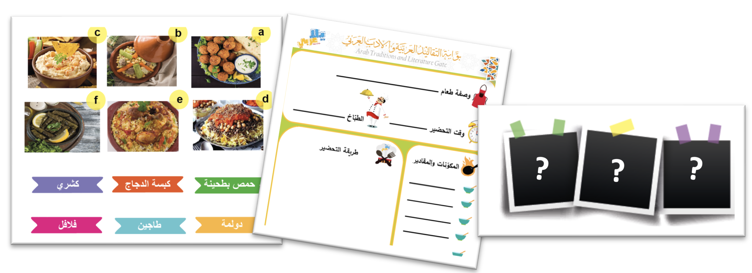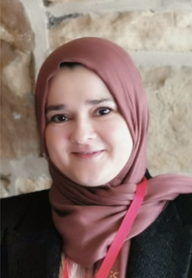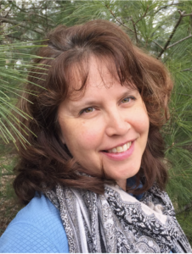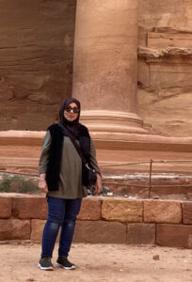
Something went Wrong
Try entering your email again or contact us at support@qfi.org
Try entering your email again or contact us at support@qfi.org
You’ll receive an email with a confirmation link soon.
Oct 23, 2023
By Luma Hameed, Sandra Makielski and Fatima Mohamed
How do you teach about Arab Culture in the classroom? What are ways to highlight its complexities and nuances? Three educators share their tips and experiences below.
Luma Hameed, Associate Lecturer at Goldsmiths, University of London, shares lesson plan examples for incorporating culture into multicultural classes. Sandra Makielski, a seventh-grade geography teacher from Rhode Island, discusses three engaging ways she introduces her middle school students to the Arab world. Finally, Arabic language educator Fatima Mohamed shares her experiences introducing students to Arab culture through field trips within the UK and beyond.
By Luma Hameed
When we learn our first language, we imitate more than sounds and words; we experience our culture which shapes the way we address people in everyday life situations without causing a misunderstanding. The same logic applies to foreign language learning. Language and culture are ‘interrelated’, Brown (2007).
With the rise of the number of multilingual and multicultural students, teachers must adopt an ‘Intercultural Approach’ that requires students to exchange information about their own culture as well as the diversity of the Arab culture. This helps them to be more linguistically accurate and to choose the appropriate words and phrases for different contexts.
At the end of teaching any language topic, I follow the steps below to cover teaching the cultural related themes across various Arab countries to students from a diverse cultural background:
-
Reflect on the planning steps above and try to think about the steps that have been used with the examples below:
* Full lesson plans and power point presentation can be downloaded from Shubbak website https://www.shubbak.co.uk/learning-resource/
-
* The lesson is from ‘Yalla Arabi’ online digital book www.arabicsawa.co.uk
-
* The lesson is from ‘Yalla Arabi’ online digital book www.arabicsawa.co.uk
-
* The lesson is from ‘Yalla Arabi’ online digital book www.arabicsawa.co.uk
-
By Sandra Makielski
The complexities and nuances that surround the Middle East and Northern Africa (MENA) are both exciting and intimidating. As a 7th grade geography teacher in Rhode Island, often I approach this dynamic region through three main vehicles: food, student choice, and drums.
To showcase the diversity of the MENA region, I take one common food ingredient and highlight how different peoples use that particular ingredient to make it their own. For example, students can easily compare and appreciate the unique taste of a Moroccan rice pilaf dish versus an Iranian rice pilaf. These rice dishes and others can be prepared with the students or outside of the classroom, but a small taste fills the senses and highlights the diversity while helping to fill those hungry students.
Highlighting just one country rarely allows for a deeper understanding of the complexity that is the MENA region. In turn, one approach is to design projects where students choose their country of interest and then participate in a culminating event to share their expertise. This might be as simple as Cultural Mandalas or reading and analyzing picture books from numerous countries. Larger events might include international fairs, bazaars, and community gatherings
Percussion instruments exist throughout the MENA region. Inviting artists from different countries who play similar instruments for students provides an engaging and hands-on experience that reinforces both similarities and differences surrounding percussion instruments.
Whichever the approach, the goal is to help bring authenticity, engagement, and understanding to this complex region for our students.
By Fatima Mohamed
I teach the Arabic language to students ranging from ages 11 to 16 in England. Most of them are non-native learners of Arabic with little-to-no exposure to Arab culture, so everything they learn about Arab culture comes through their Arabic language lessons. So, I connect Arab culture to every unit in my language classes, from food to clothing to customs and traditions, and I regularly lead field trips within the UK and to Jordan and Al-Andalus, Spain.
Within the classroom, I introduce various foods from across the Arab world – from tagine to shawarma to mensaf to kosheri. I introduce students to celebrities from the Arab world and show them dramas because of the deep connection they provide to past and present Arab culture. I show them different styles of clothing, and we discuss how there are Melhafas in Mauritania and Abiyyas in the Gulf and the Deraa in Yemen, and how we wear it. It’s obviously impossible to cover everything, but I try to pull examples from each country to show students the diversity and richness of culture and traditions across the Arab World. I also encourage my students to participate in competitions such as the annual Arabic Speaking Competition which offers another form of exposure to Arab culture through the texts they select to recite.
But just experiencing culture within the classroom is not enough. About five years ago, I decided that my students needed something more. I spoke with my school about putting together international field trips, and they were very supportive. So, for the past five years, I have led trips to Al-Andalus, Spain, because of that region’s connection to Arab culture. We visit Alhambra Palace, Córdoba Mosque, Málaga, Benalmádena, and we visit a language school in Al-Andalus as well. Sometimes we partner with another class, such as Spanish or religious studies. The trips are short – only about four days – and at most I have taken 23 students.
Then last year, I led a trip to Jordan for the first time. We visited Petra, Aqaba, Wadi Rum, and other sites. My students loved reading signs and practicing Arabic with the locals. It was an incredible experience, and I’m planning another trip to Jordan for the next academic year.
It’s important that my students understand that Arabic is more than a language. The cultural elements that I teach – they’re not always in the curricula – but they are relevant and valuable. I love seeing my students’ eyes light up whenever they learn something new.
BEd, PGCE, MA in Education (Language, Culture, and Identity), Arabic Sawa1 founder
Luma is an author and associate lecturer at Goldsmiths, University of London on the ‘Arabic Certificate Course’ and is the leader of the Arabic Teachers’ Council in London and Southern England.
She is also a principal examiner at Cambridge University Press and Assessment and delivers teacher training across a wide range of topics, nationally and internationally.
Her work on ‘Creativity’ and ‘Multilingual Digital Storytelling’ with Goldsmiths, University of London, inspired her to use creative tools to teach Arabic.
Sandra D. Makielski is a seventh-grade geography teacher from North Kingstown, Rhode Island. Her passion for teaching lies in her desire to help students become global citizens by engaging in activities that foster empathy and empower students to take action. She is a proud participant of QFI’s Teacher Leadership Program. Ms. Makielski speaks regularly at conferences, networks with educators on four continents and teaches a social studies methods class at the University of Rhode Island.
Fatima Mohamed is originally from Yemen and moved to the UK in 1995. She has taught Arabic at Bolton Muslim Girls’ School, a secondary school in the UK, since 2000. She is also the lead of the Northwest Arabic Teacher Council in the UK.

